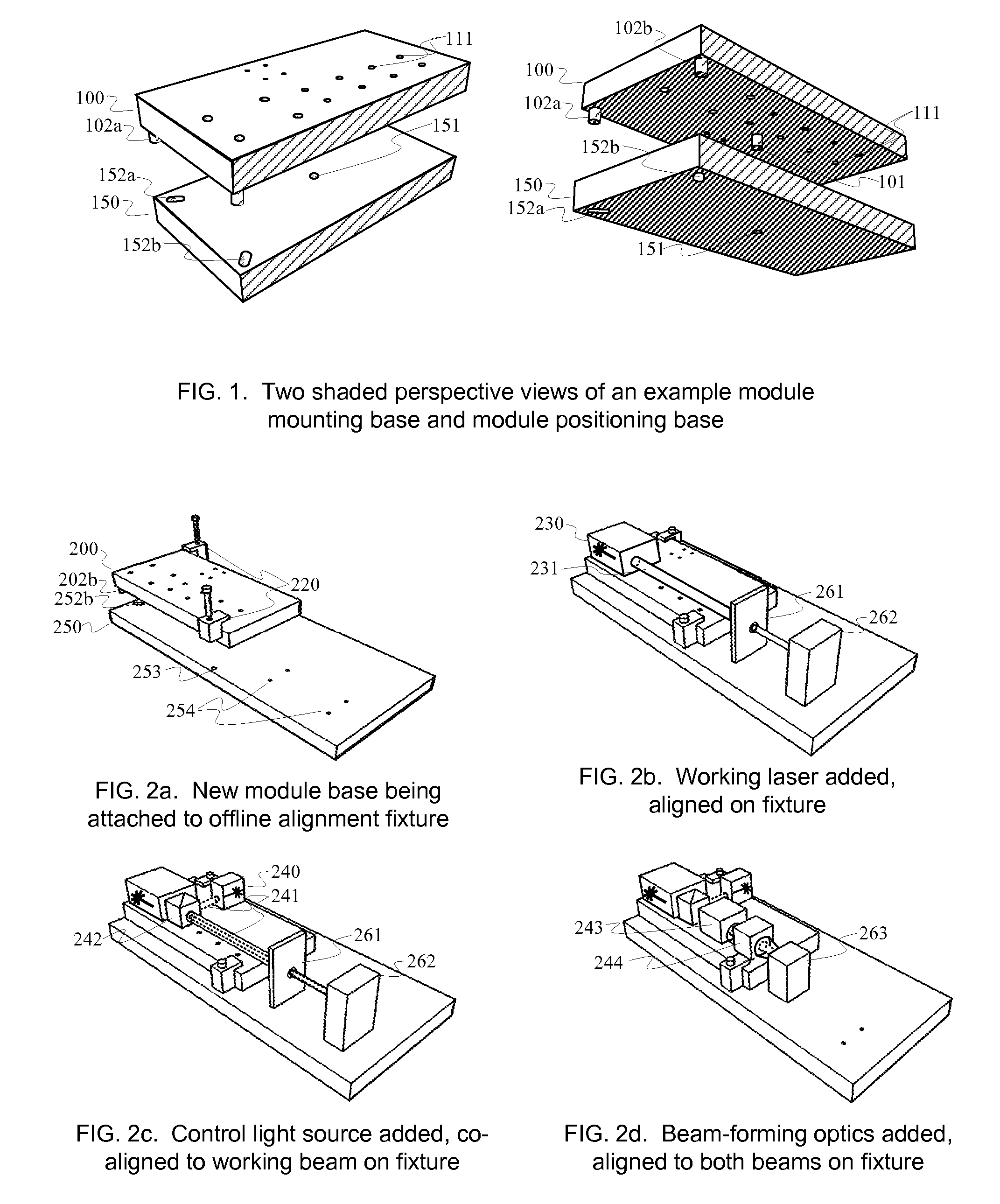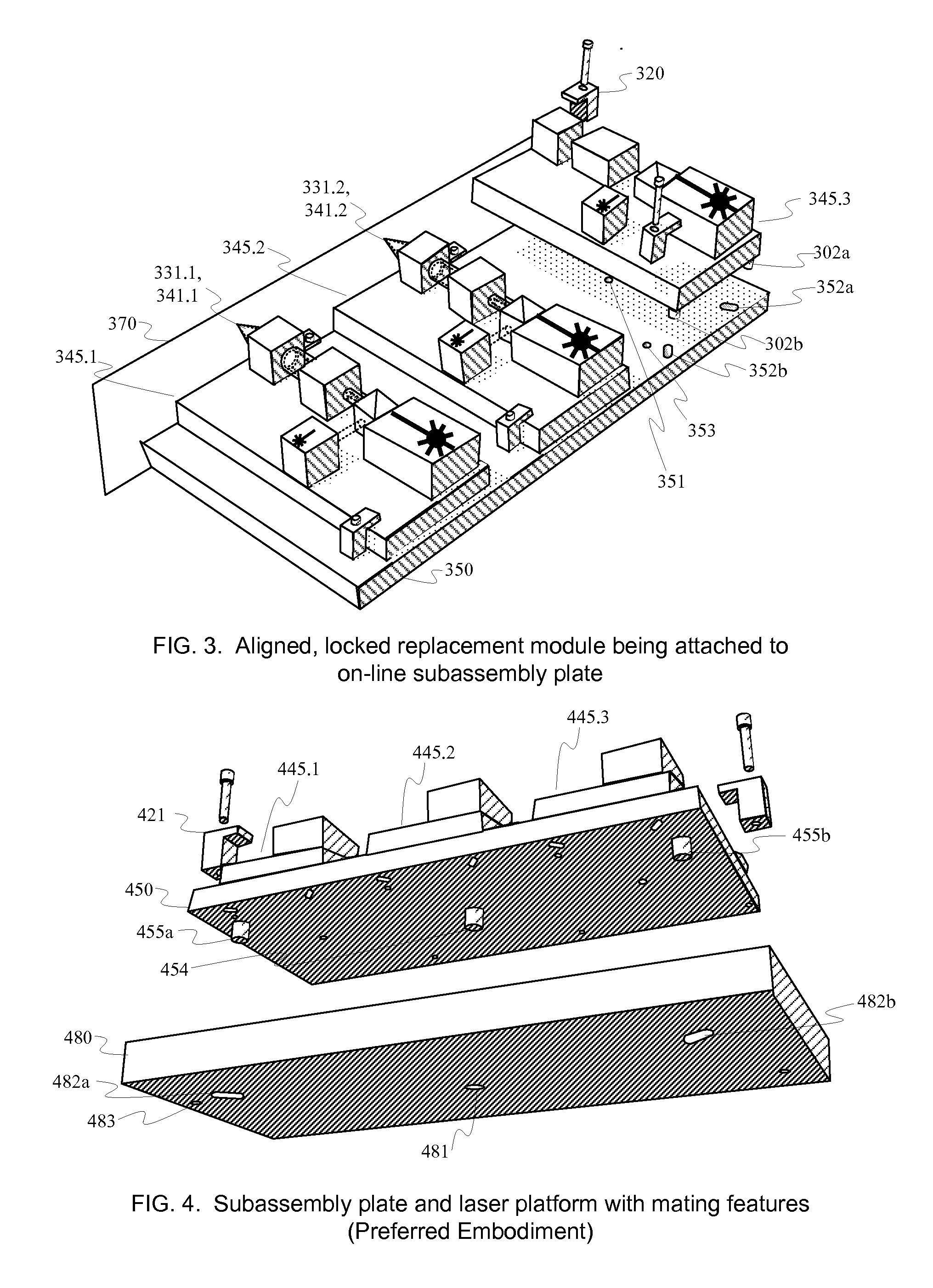Quickly replaceable processing-laser modules and subassemblies
a technology of processing lasers and subassemblies, applied in the field of mounted optics, can solve the problems of short operating life and more reliability problems of high-power lasers, needing to be replaced quickly and catastrophically, and affecting the operation of high-power lasers. , to achieve the effect of low cost, high process speed and small physical footprin
- Summary
- Abstract
- Description
- Claims
- Application Information
AI Technical Summary
Benefits of technology
Problems solved by technology
Method used
Image
Examples
Embodiment Construction
[0029]Aspects of this invention improve the cost-effectiveness of replacing processing lasers and optics at three levels: (1) the individual laser-module level, (2) the subassembly level, and (3) the laser platform assembly level.
[0030]FIG. 1 shows the basic building block of this invention, a module mounting base (MMB) 100 designed to kinematically mate to a locating surface 150. MMB 100 includes assorted features 111 for attaching the working laser, the control light source, and the mounted optics, mechanics and detectors on the surface shown here as the top. MMB 100 also includes locating features 101, 102a, and 102b on the surface shown here as the bottom. These locating features mate with receiving features 151, 152a, and 152b on locating surface 150. When mated and locked in place by temporary locks (not shown; can be clamps, magnets, bolts, springs, etc.), the locating features and receiving features constrain all the degrees of freedom of motion of MMB 100 with respect to lo...
PUM
| Property | Measurement | Unit |
|---|---|---|
| size | aaaaa | aaaaa |
| temperature | aaaaa | aaaaa |
| thermal expansion | aaaaa | aaaaa |
Abstract
Description
Claims
Application Information
 Login to View More
Login to View More - R&D
- Intellectual Property
- Life Sciences
- Materials
- Tech Scout
- Unparalleled Data Quality
- Higher Quality Content
- 60% Fewer Hallucinations
Browse by: Latest US Patents, China's latest patents, Technical Efficacy Thesaurus, Application Domain, Technology Topic, Popular Technical Reports.
© 2025 PatSnap. All rights reserved.Legal|Privacy policy|Modern Slavery Act Transparency Statement|Sitemap|About US| Contact US: help@patsnap.com



